Can You Use Landscape Timbers for Fence Posts?
- January 31, 2024
- 0 comment
When constructing a fence, its foundation plays a pivotal role, with fence posts being the cornerstone that ensures stability and longevity. In the quest for suitable materials, landscape timbers often emerge as a candidate due to their prevalent use in outdoor landscaping projects. But the question arises: are landscape timbers a viable choice for fence posts? This article delves into the intricacies of using landscape timbers for this purpose, evaluating their suitability based on durability, strength, and cost, while also exploring alternative materials.
What Are Landscape Timbers?
Landscape timbers are elongated pieces of wood predominantly utilized in outdoor landscaping endeavors. Crafted from pressure-treated lumber or composite materials, they are fortified against rot, insects, and decay, making them a resilient choice for garden beds, retaining walls, and other landscape features.
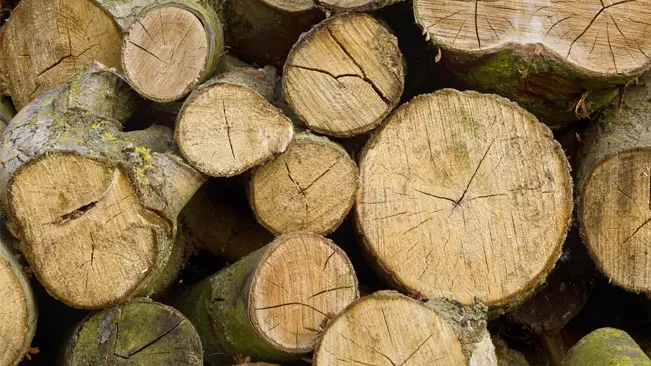
Their appeal lies in their durability, cost-effectiveness, ease of installation, and the versatility to be tailored to specific design needs. Moreover, their potential for being crafted from recycled or sustainably sourced materials marks them as an eco-friendly option.
Durability of Landscape Timbers as Fence Posts
Landscape timbers, while highly effective for various landscaping projects, face scrutiny when repurposed as fence posts due to concerns about their longevity and durability. Unlike traditional fence posts, which are often subjected to rigorous treatments aimed at enhancing their resistance to rot, decay, and pest invasions, landscape timbers may not inherently receive such protective measures. This lack of specialized treatment can precipitate a reduction in their lifespan, leading to the potential need for more frequent replacements compared to their specifically treated counterparts.
The durability of landscape timbers when used as fence posts is considerably influenced by a range of environmental factors, including exposure to moisture, susceptibility to pest infestations, and vulnerability to fungal growths. However, selecting landscape timbers that have been high-quality and treated to withstand these environmental stressors can markedly improve their longevity, making them a more viable option for fence posts. This careful consideration of timber quality and treatment is crucial for those looking to leverage the aesthetic and functional benefits of landscape timbers for fencing purposes, ensuring a balance between natural beauty and structural endurance.
Evaluating Strength
The strength of fence posts is crucial for supporting fence panels and withstanding environmental forces, but landscape timbers, not originally intended for such structural roles, may not meet these demands. Designed primarily for aesthetic landscaping projects, landscape timbers might lack the necessary robustness, leading to potential bending, warping, or fracturing under stress, such as heavy winds or the weight of the fence itself.
This susceptibility can result in a cycle of frequent maintenance and repairs, raising long-term costs and questioning the reliability and safety of the fence. It highlights the importance of carefully evaluating the suitability of landscape timbers against the rigorous requirements typically expected of traditional fence post materials.
Cost Considerations
When planning to build fence posts, the choice of material significantly influences the overall cost. Wooden posts, including landscape timbers, are generally the most affordable, with prices ranging from $2 to $25 per post, while concrete, steel, and vinyl posts present more costly alternatives, with prices stretching from $10 to $60 per post depending on the material’s quality and durability. Cedar posts stand out for their natural resistance and fall within the $10 to $30 range. It’s crucial to factor in the cost of concrete for anchoring, which can add an additional $5 to $10 per post, and protective treatments for wood, which vary between $10 and $50 per gallon.
Labor costs for professional installation can significantly impact the budget, with rates typically between $5 to $15 per linear foot, including setting the posts in concrete. Additional expenses may arise from purchasing tools and supplies like post hole diggers, levels, nails, and screws, potentially adding $50 to $200 to the total cost. These estimates serve as a guide, but actual expenses can vary based on local market rates, the project’s complexity, and specific fencing requirements. It’s advisable to obtain multiple quotes to ensure a cost-effective and durable fencing solution.
Alternatives To Landscape Timbers For Fence Posts
For individuals exploring different options, a wide range of materials is available, each bringing its unique set of advantages to the table:
Concrete Posts
Concrete fence posts are celebrated for their exceptional durability and ability to withstand the test of time. Their robust construction renders them completely resistant to common issues like rot, insect damage, and even fire, making them an excellent choice for properties in areas prone to extreme weather conditions.
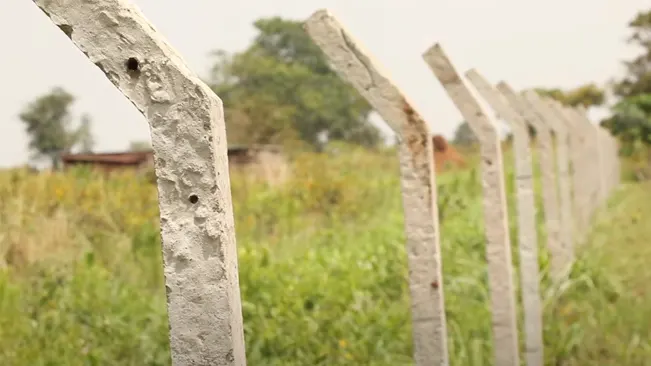
Concrete posts provide a solid, immovable foundation for fencing structures, ensuring stability and security. However, their heavyweight and the need for specialized installation techniques can make the setup process more labor-intensive compared to lighter materials.
Steel Posts
Steel fence posts are renowned for their robustness and durability, offering an unwavering base for fences, especially in regions prone to extreme weather. The inherent properties of steel, resistant to decay and immune to pest attacks, significantly enhance their longevity and reduce the need for upkeep. These posts stand out in environments faced with severe wind gusts or substantial snowfall, as their structural integrity and steadfastness provide unparalleled stability and resilience.
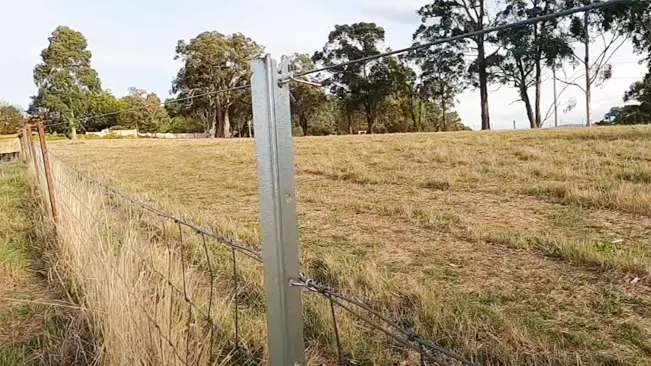
The combination of these attributes makes steel fence posts a top choice for ensuring the long-term reliability and strength of fencing structures, even under the most challenging conditions.
Vinyl Posts
Vinyl fence posts are celebrated for their adaptability and low maintenance, presenting an array of designs and hues to match various stylistic inclinations. Crafted from superior, featherlight vinyl, these posts are impervious to decay, pests, and additional degrading elements, guaranteeing a durable barrier that demands little to no maintenance.

The flexibility of vinyl enables it to replicate the aesthetics of wood or alternative substances, offering the classic appeal of conventional fences minus the habitual upkeep woes. This combination of aesthetic versatility, durability, and ease of care makes vinyl fence posts an attractive option for those seeking a practical yet stylish fencing solution.
Brick and Stone Posts
Choosing brick or stone for fence posts can markedly elevate a property’s visual allure, bestowing a classic and refined appearance. Recognized for their robustness, these natural materials stand the test of time with minimal upkeep, making them a practical choice for long-term aesthetics. The upfront expenses associated with these materials and their installation might be on the higher side, attributed to the intricate craftsmanship and expert masonry required.
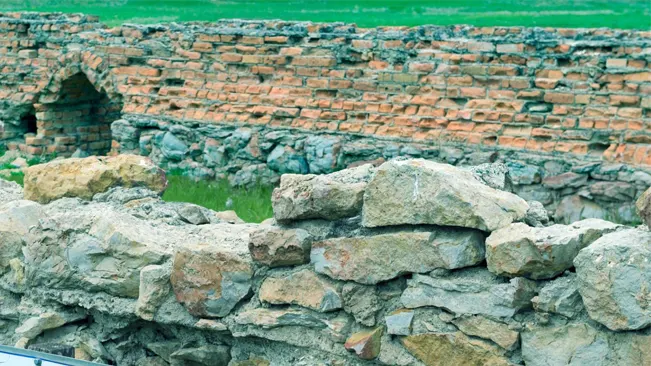
Nevertheless, this initial investment is often offset by the significant enhancement in property value, driven by the lasting elegance and structural integrity that brick and stone posts bring to the landscape. Their ability to blend durability with aesthetic appeal makes them a worthwhile consideration for those looking to make a lasting impact on their property’s appearance and value.
Cedar and Treated Lumber Posts
Cedar posts are esteemed for their natural aesthetic charm and built-in resilience against decay and infestations, rendering them an ideal selection for fences that harmonize with the natural landscape. Conversely, treated lumber posts benefit from a chemical treatment regimen aimed at bolstering their defense against the ravages of weather and other outdoor elements, thereby prolonging their functional life.
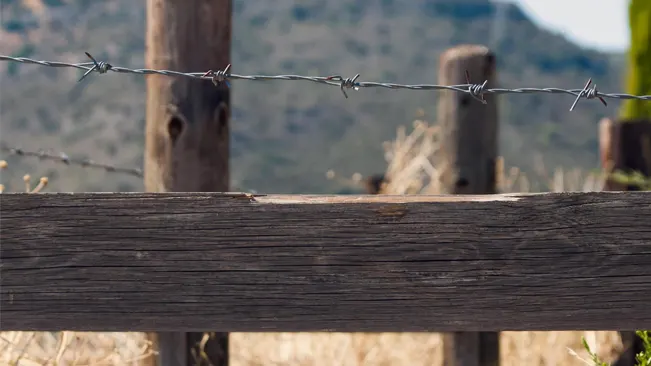
Although maintaining both types of wood, through processes like staining or sealing, is necessary to maintain their integrity and appearance, they stand out as more eco-conscious choices compared to man-made alternatives. This blend of visual appeal, durability, and environmental consideration makes cedar and treated lumber posts attractive options for those seeking sustainable yet effective fencing solutions.
Recycled Plastic Posts
Fence posts crafted from recycled plastic emerge as an eco-conscious and resilient fencing solution, utilizing high-density recycled plastics that are designed to endure the challenges of rot, pests, and harsh climatic conditions, effectively resisting the degradation that often plagues conventional fencing materials. The notable durability and minimal upkeep requirements of these recycled plastic posts underscore their appeal as an environmentally responsible option.
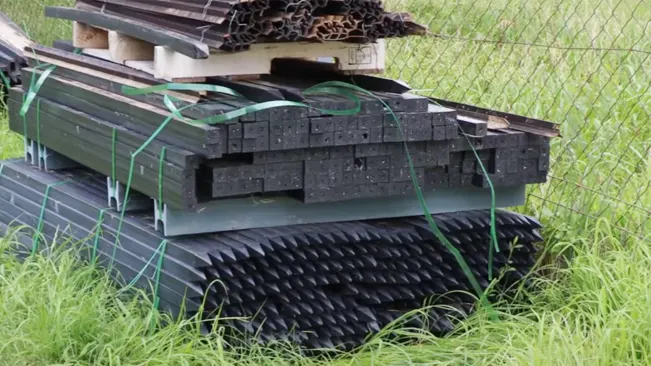
For individuals committed to reducing their ecological footprint, these posts offer the dual benefits of contributing to sustainability efforts while providing a robust and dependable boundary that stands the test of time, ensuring both functional integrity and environmental stewardship in fencing choices.
Related Topics
Conclusion
Selecting landscape timbers as fence posts requires weighing their initial affordability and natural look against potential durability issues and higher long-term costs. Given their limitations for fencing compared to specialized materials, it’s crucial to assess the project’s specific needs and environmental challenges. This approach ensures a choice that balances aesthetics and functionality, ultimately resulting in a fence that is both visually appealing and enduring.
FAQs
- How long can landscape timbers last as fence posts?
Depending on quality and environmental conditions, they can last between 7 to 20 years. - Are landscape timbers cheaper than traditional fence posts?
Initially, yes, but the need for frequent replacements can increase long-term costs. - Can landscape timbers withstand harsh weather conditions?
If properly treated, they can, but they’re generally less resilient than materials designed for fence posts. - What’s the most durable alternative to landscape timbers for fence posts?
Concrete and steel posts are among the most durable options. - Do landscape timbers require maintenance when used as fence posts?
Yes, regular inspections and treatments can extend their lifespan. - Can I customize the size and shape of landscape timbers for specific fence designs?
Yes, one of the advantages of landscape timbers is their versatility, allowing them to be cut and shaped to fit various design requirements. - How do I protect landscape timbers from rot and decay if used as fence posts?
Applying a wood preservative and ensuring proper drainage around the posts can help protect them from moisture-related issues. - Are recycled plastic posts a sustainable alternative to landscape timbers for fence posts?
Yes, recycled plastic posts are an environmentally friendly option as they are made from reused materials and are durable and long-lasting. - Can cedar posts naturally resist pests and decay without chemical treatment?
Cedar contains natural oils that make it resistant to decay, rot, and insect infestations, reducing the need for chemical treatments. - What is the most cost-effective fence post material in the long run?
Materials like concrete, steel, and recycled plastic tend to have higher upfront costs but are more cost-effective over time due to their durability and low maintenance requirements.

Charles Hayes
Forestry AuthorI'm Charles Hayes, I bring over 15 years of specialized expertise in landscaping and woodworking, blending artistic design with sustainable environmental stewardship. My career, fueled by a profound passion for the natural world, encompasses extensive education and hands-on experience in creating harmonious, eco-friendly outdoor spaces and responsibly managing forest resources. Recognized for my professional standing, I am committed to continuous learning and certification in cutting-edge practices. My expertise is not only reflected in my work but also in my contributions to community projects, educational workshops, and collaborations with industry leaders. As an authoritative voice in my field, I strive to share knowledge and promote environmentally conscious approaches, making me a trusted resource in landscaping and forestry.







Leave your comment